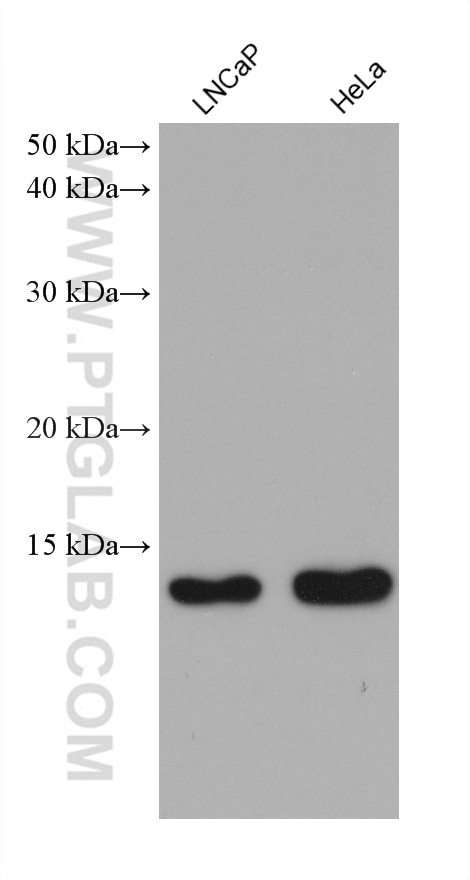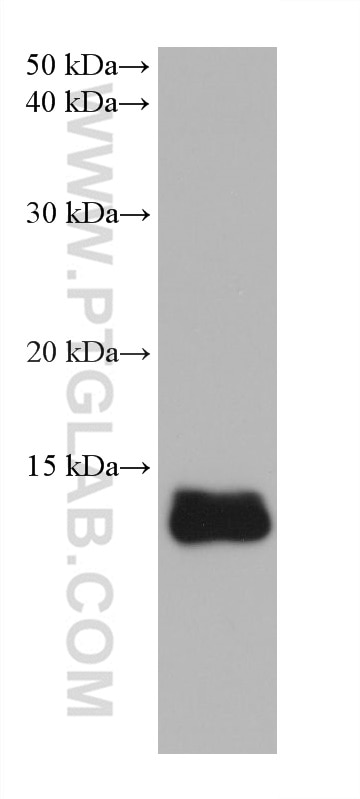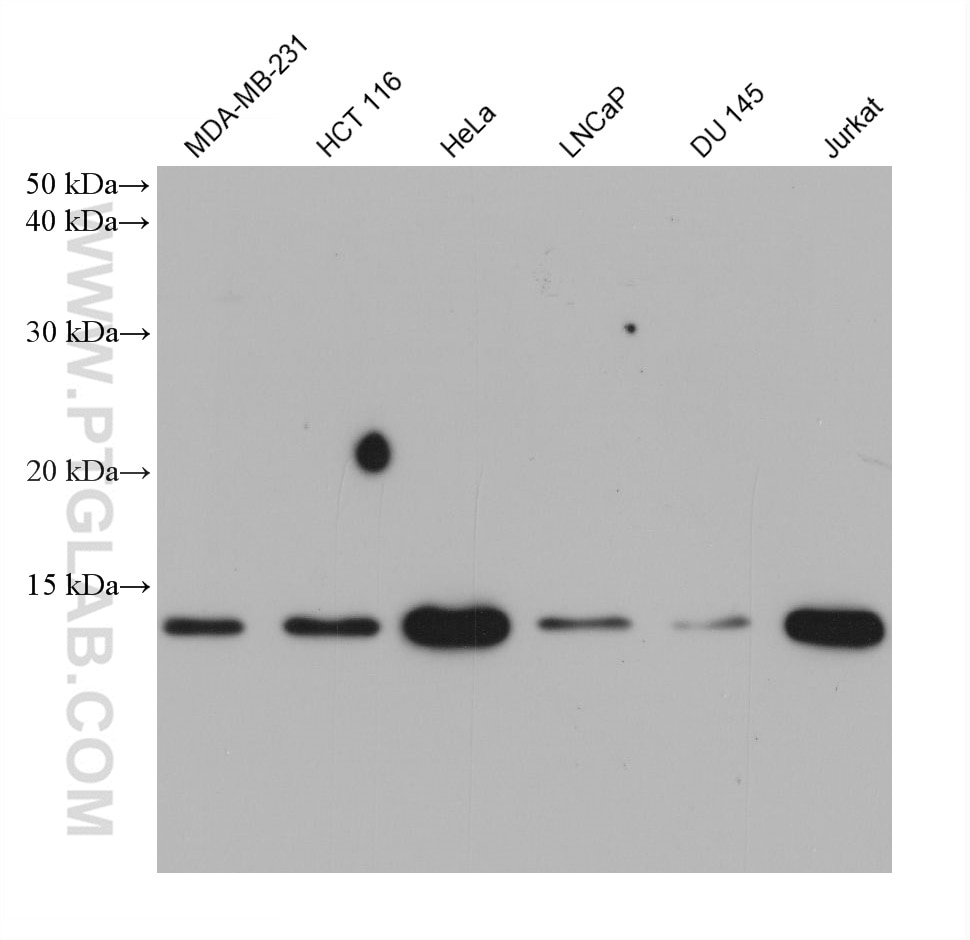Anticorps Monoclonal anti-ISG15
ISG15 Monoclonal Antibody for WB, ELISA
Hôte / Isotype
Mouse / IgG2a
Réactivité testée
Humain
Applications
WB, ELISA
Conjugaison
Non conjugué
CloneNo.
3G9A2
N° de cat : 68408-1-Ig
Synonymes
Galerie de données de validation
Applications testées
| Résultats positifs en WB | cellules MDA-MB-231, cellules A431, cellules DU 145, cellules HCT 116, cellules HeLa, cellules Jurkat, cellules LNCaP |
Dilution recommandée
| Application | Dilution |
|---|---|
| Western Blot (WB) | WB : 1:2000-1:10000 |
| It is recommended that this reagent should be titrated in each testing system to obtain optimal results. | |
| Sample-dependent, check data in validation data gallery | |
Informations sur le produit
68408-1-Ig cible ISG15 dans les applications de WB, ELISA et montre une réactivité avec des échantillons Humain
| Réactivité | Humain |
| Hôte / Isotype | Mouse / IgG2a |
| Clonalité | Monoclonal |
| Type | Anticorps |
| Immunogène | ISG15 Protéine recombinante Ag8953 |
| Nom complet | ISG15 ubiquitin-like modifier |
| Masse moléculaire calculée | 165 aa, 18 kDa |
| Poids moléculaire observé | 13-17 kDa |
| Numéro d’acquisition GenBank | BC009507 |
| Symbole du gène | ISG15 |
| Identification du gène (NCBI) | 9636 |
| Conjugaison | Non conjugué |
| Forme | Liquide |
| Méthode de purification | Purification par protéine A |
| Tampon de stockage | PBS avec azoture de sodium à 0,02 % et glycérol à 50 % pH 7,3 |
| Conditions de stockage | Stocker à -20°C. Stable pendant un an après l'expédition. L'aliquotage n'est pas nécessaire pour le stockage à -20oC Les 20ul contiennent 0,1% de BSA. |
Informations générales
ISG15 is a ubiquitin-like protein that becomes conjugated to many cellular proteins upon activation by interferon-alpha (IFNA) and -beta (IFNB). ISG15 forms covalent conjugates with its target proteins in a process called ISGylation, which in mammals is known to play a role in antiviral immunity. ISG15 proteins possess two ubiquitin-like (UBL) domains and a highly conserved C-terminal LRGG sequence, the latter being known as the ubiquitin conjugation motif. Intracellular ISG15 are conjugated, via the LRGG motif, to target proteins through a process called ISGylation, which resembles largely ubiquitination, the process of formation of ubiquitin conjugates. Unconjugated extracellular ISG15, which are released from several types of human and murine cells, are known to possess cytokine-like activity.
Protocole
| Product Specific Protocols | |
|---|---|
| WB protocol for ISG15 antibody 68408-1-Ig | Download protocol |
| Standard Protocols | |
|---|---|
| Click here to view our Standard Protocols |




